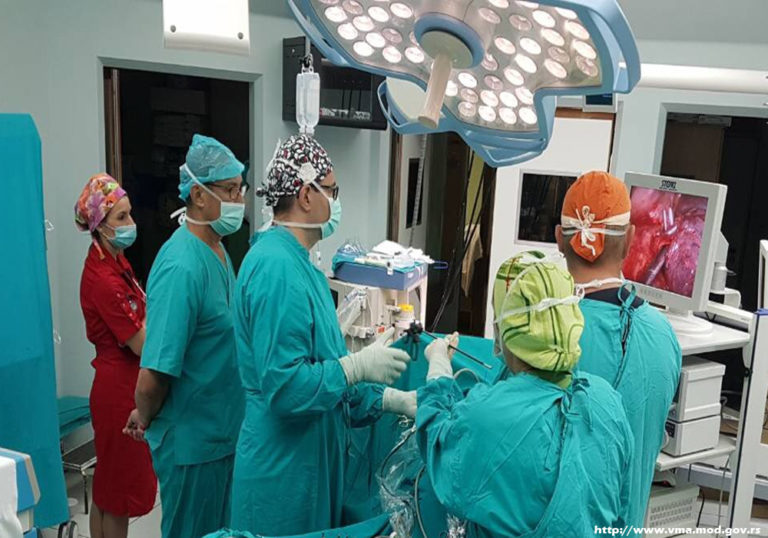There are over 200,000 diagnosed cases of lung cancer (LC) each year in the United States. While the incidence rate has declined since 1991, the disease remains the leading cause of cancer-related death. When the condition is detected in stage 1 (i.e. localized within the lung), it can be treated successfully. By the time cancerous cells have metastasized and spread to distant lymph nodes, it becomes more difficult to contain.
In the past, the disease was treated through thoracotomy (also known as open chest surgery). The patient’s thoracic cavity was accessed by the surgeon after a long incision was made into the chest. The breastbone was cut and the ribs were spread to provide working space. Because the ribs have limited flexibility, the procedure occasionally resulted in fractures. To resolve this issue, thoracic surgeons began to remove portions of the patient’s ribcage.
Today, minimally invasive techniques are often used to treat lung cancer. Once of these techniques is a VATS lobectomy. This article will provide an overview of the procedure and describe what to expect during recovery.
How is The Operation Performed?
A lobectomy is the surgical removal of a lobe (i.e. section of a lung). It is one of the most common procedures done today to treat early-stage LC. With a VATS lobectomy, four incisions are made into the sides of the patient’s chest. Three of the four cuts are usually less than one inch in size. The fourth incision can reach several inches. No need to cut the sternum or spread ribs. All procedures are done through this small incision.
The surgeon will insert a thoracoscope and several other surgical instruments through an incision. Thoracoscope is equipped with a small light and camera. The camera sends the image back to the monitor used by the surgeon to see inside the patient’s chest cavity.
The tumor is cut away from the healthy tissue and extracted through one of the incisions. If the surgeon suspects cancer cells have spread to nearby lymph nodes (e.g. the disease is in stage 2), some of them will be biopsied. This is done in order to verify or refute the spread of lung cancer to the lymph nodes.
After the diseased tissue has been removed, the surgeon will make sure there are no signs of bleeding in the thoracic cavity. The four incisions are then closed and cleaned before the patient is transferred to the hospital recovery ward.
Common Questions About The Procedure
Before going through the screening process or undergoing the procedure itself, prospective patients often have many questions. For example, given the success rate of this type of lung cancer surgery and its minimally invasive nature, some people wonder why it is not performed by all hospitals. The answer is twofold. First, relatively few surgeons have mastered the techniques involved with a VATS lobectomy. Second, some surgical centers lack the necessary equipment.
Another common area of confusion involves a patient’s candidacy. Many people think this form of minimally invasive lung cancer surgery can be performed on any person who suffers from the disease. In reality, the procedure is mostly reserved for those with stage 1 non-small cell LC. The tumor should measure less than three centimeters and remain localized within the lung.
The recovery period following the operation is usually less than six weeks. Patients will usually stay in the hospital for two or three days after undergoing surgery. Then he was released to complete their recovery at home. By the fourth week, most patients can return to their normal level of activity, although some will require a full six weeks.
VATS lobectomy offers many advantages over traditional lung cancer surgery done through thoracotomy. The recovery time is shorter and accompanied by less postoperative pain. Plus, the patient is able to return to a normal lifestyle more quickly. If you suffer from early-stage lung cancer, ask your physician whether you are a candidate for this approach.
















